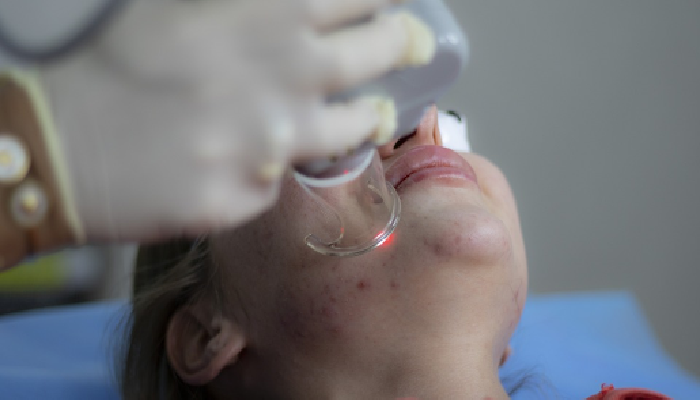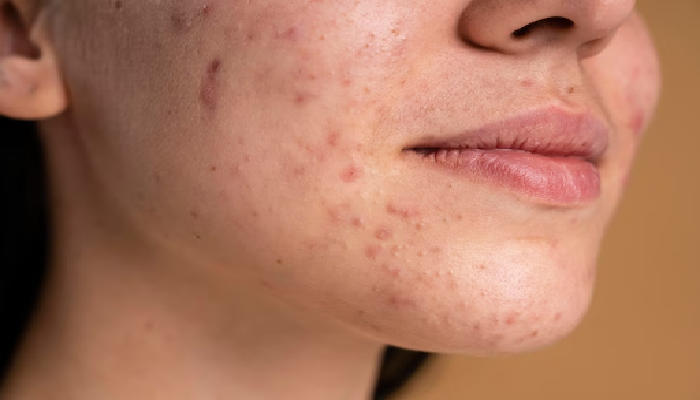Acne marks and acne scars – what’s the difference? Many people are unsure of the distinction and often use the terms interchangeably. However, there is a great difference between the two – it’s important to understand before seeking treatment. This post will discuss the differences between acne marks and acne scars, along with the acne scar treatment Singapore for each one.
What Are Acne Marks?
Acne marks, also called post-inflammatory hyperpigmentation (PIH), are dark spots that occur when there is an overproduction of melanin after an acne breakout. They can be red or brown, may be slightly raised and are often called “acne spots” or “acne discolouration”. It commonly occurs in individuals with darker skin tones; however, anyone can get PIH.
Common Types of Acne Marks
- Hyperpigmentation: This type of acne mark is due to a build-up of melanin, the pigment that gives skin its colour. It typically appears as a dark spot or patch of skin.
- Post-inflammatory erythema (PIE): This type of acne mark is due to inflammation, which a breakout can trigger. It appears as reddish or pink discolouration on the skin.
- Dark marks: This type of acne mark is due to hyperactive melanin production, which an inflamed breakout can trigger. It appears to be a dark spot on the skin.
What Are Acne Scars?
Acne scars are depressions or indentations in the skin that occur after a pimple has healed. They often have uneven, pitted surfaces and can be caused by severe acne breakouts or picking at the skin.
Common Forms of Acne Scars
- Ice pick scars: These form after severe inflammation from cystic or nodular acne. These acne scars are deep, narrow and V-shaped with steep sides as if pierced with an ice pick.
- Boxcar scars: These are angular, shallow depressions in the skin that often have steep sides. They are usually the result of inflamed acne lesions and can occur on any part of the face.
- Rolling scars: These are wide, shallow skin depressions with sloping edges. They usually occur when an inflamed breakout damage the collagen and can be found on the cheeks or jawline.
Types of Acne Scars
- Atrophic scars: These are the most common type of acne scars and occur when skin tissue is lost. They appear as depressions in the skin that can be shallow or deep.
- Hypertrophic scars: These raised scars occur when there is too much collagen production during wound healing. They can appear as raised bumps or ridges on the skin.
Comparison: Acne Marks vs Acne Scars
Acne marks and acne scars look similar but are two different types of skin damage. Let’s see their differences in terms of causes, treatments, appearance and duration.
What Causes Acne Marks?
Acne marks are due to inflammation of the skin due to acne. The clogged pores that become infected with bacteria inflame the skin. It leads to redness and swelling, and eventually, when the infection subsides, it leaves behind dark spots on the skin, known as acne marks.
Treatment Options

Treatment for acne marks includes topical creams and other medications like retinoids, hydroquinone, azelaic acid, and salicylic acid. Some laser treatments like pulsed-dye lasers are also available to reduce the appearance of acne marks.
Appearance and Duration
Acne marks are dark spots that can vary in size and colour. They are usually brown or red and may become darker with time. Acne marks typically fade over several weeks or months, but they can sometimes take up to a year to completely disappear.
What Causes Acne Scars?
Acne scars are deeper and more permanent than acne marks. They form when the body produces too much collagen, which can happen due to inflammation caused by severe acne. This excess collagen causes deep pits in the skin, creating indentations and bumps referred to as acne scars.
Treatment Options
Treatment for acne scars can be dermal fillers, laser resurfacing treatments, chemical peels, and microneedling. These treatments help to reduce the appearance of acne scars by filling in the depressions or bumps caused by excess collagen production.
Appearance and Duration
Acne scars typically appear as indentations or raised bumps on the skin. They may be red, brown or white and can remain on the skin for years or even a lifetime if left untreated.
How to Prevent Acne Marks and Scars
It is important to keep skin free of bacteria to prevent the formation of acne marks and scars by washing your face with a mild cleanser twice a day, avoiding overly harsh exfoliants or abrasive scrubs, and applying topical treatments as soon as you notice any signs of breakouts developing. Additionally, it is important to avoid picking or popping pimples, as this can worsen inflammation and lead to deeper scarring.
How to Get Rid of Acne Scars According to the Experts
If you want to get rid of acne scars, the best approach is to consult a dermatologist. A dermatologist can provide treatments tailored to your skin type and help reduce the appearance of your scars. Treatments may include laser resurfacing, microneedling, dermal fillers, and chemical peels. Additionally, your dermatologist can advise on lifestyle changes and homecare that can help reduce the appearance of your scars.
Final Thoughts on the Difference between Acne Marks and Scars
Acne marks and acne scars may look similar at first glance, but they are two different types of skin damage. Acne marks are due to inflammation by acne, while acne scars form when the body produces too much collagen in response to severe breakouts. Treatment options vary depending on the type of damage and can range from topical creams to laser treatments. It is important to take proactive steps to prevent the formation of both acne marks and scars by keeping skin clean, avoiding overly harsh products, and avoiding picking or popping pimples. If you struggle with breakouts or scarring, consult a dermatologist for personalized advice and treatment.
